
Roxbury is a neighborhood within the City of Boston, Massachusetts, United States.

Anna Louise Day Hicks was an American politician and lawyer from Boston, Massachusetts, best known for her staunch opposition to desegregation in Boston public schools, and especially to court-ordered busing, in the 1960s and 1970s. A longtime member of Boston's school board and city council, she served one term in the United States House of Representatives, succeeding John William McCormack.
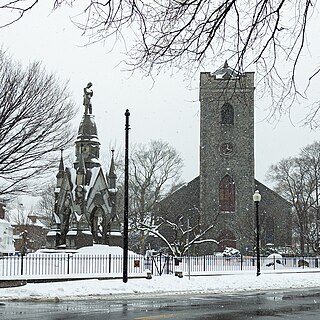
Jamaica Plain is a neighborhood of 4.4 square miles (11 km2) in Boston, Massachusetts. Settled by Puritans seeking farmland to the south, it was originally part of Roxbury, Massachusetts. The community seceded from Roxbury during the formation of West Roxbury in 1851 and became part of Boston when West Roxbury was annexed in 1874. In the 19th century, Jamaica Plain became one of the first streetcar suburbs in America and home to a significant portion of Boston's Emerald Necklace of parks, designed by Frederick Law Olmsted.

Dorchester is a Boston neighborhood comprising more than 6 square miles (16 km2) in the City of Boston, Massachusetts, United States. Originally, Dorchester was a separate town, founded by Puritans who emigrated in 1630 from Dorchester, Dorset, England, to the Massachusetts Bay Colony. This dissolved municipality, Boston's largest neighborhood by far, is often divided by city planners in order to create two planning areas roughly equivalent in size and population to other Boston neighborhoods.
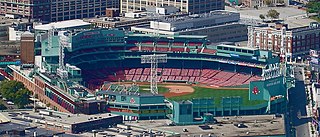
Fenway–Kenmore is an officially recognized neighborhood of Boston, Massachusetts. While it is considered one neighborhood for administrative purposes, it is composed of numerous distinct sections that, in casual conversation, are almost always referred to as "Fenway", "the Fenway", "Kenmore Square", or "Kenmore". Furthermore, the Fenway neighborhood is divided into two sub-neighborhoods commonly referred to as East Fenway/Symphony and West Fenway.
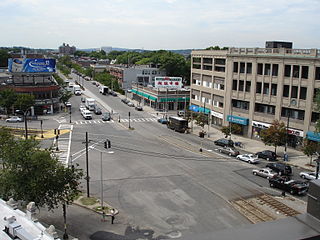
Allston is an officially recognized neighborhood within the City of Boston, Massachusetts. It was named after the American painter and poet Washington Allston. It comprises the land covered by the zip code 02134. For the most part, Allston is administered collectively with the adjacent neighborhood of Brighton. The two are often referred to together as Allston–Brighton. Boston Police Department District D-14 covers the Allston-Brighton area and a Boston Fire Department Allston station is located in Union Square which houses Engine 41 and Ladder 14. Engine 41 is nicknamed "The Bull" to commemorate the historic stockyards of Allston.

Mattapan is a neighborhood in Boston, Massachusetts. Historically and for legal processes a section of Dorchester, Mattapan became a part of Boston when Dorchester was annexed in 1870. Mattapan is the original Native American name for the Dorchester area, possibly meaning "a place to sit." At the 2010 census, it had a population of 36,480, with the majority of its population immigrants.

Hyde Park is the southernmost neighborhood of Boston, Massachusetts, United States. Situated 7.9 miles south of downtown Boston, it is home to a diverse range of people, housing types and social groups. It is an urban location with suburban characteristics.

Kevin Hagan White was an American politician best known for serving as the mayor of Boston for four terms from 1968 to 1984. He was first elected to the office at the age of 38. He presided as mayor during racially turbulent years in the late 1960s and 1970s, and the start of desegregation of schools via court-ordered busing of school children in Boston. White won the mayoral office in the 1967 general election in a hard-fought campaign opposing the anti-busing and anti-desegregation Boston School Committee member Louise Day Hicks. Earlier he had been elected Massachusetts Secretary of the Commonwealth in 1960 at the age of 31, and he resigned from that office after his election as Mayor.
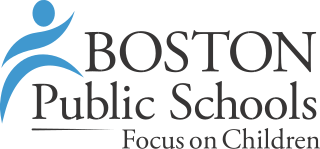
Boston Public Schools (BPS) is a school district serving the city of Boston, Massachusetts, United States. It is the largest public school district in the state of Massachusetts.

Boston Latin Academy (BLA) is a public exam school founded in 1878 in Boston, Massachusetts providing students in grades 7th through 12th a classical preparatory education.

Forest Hills is a part of the Jamaica Plain neighborhood of Boston, Massachusetts, United States. Forest Hills is characterized by hilly terrain and wooded areas within and adjacent to its borders. In general, the area slopes upward from Hyde Park Ave and downward from Walk Hill Street.
The Chelsea High School is located in Chelsea, Massachusetts, United States and is the only public high school in Chelsea. It is a part of Chelsea Public Schools. Established in 1845, Chelsea High moved into its current school building in 1996. Chelsea High School is located at 299 Everett Avenue, Chelsea, Massachusetts 02150.
The desegregation of Boston public schools (1974–1988) was a period in which the Boston Public Schools were under court control to desegregate through a system of busing students. The call for desegregation and the first years of its implementation led to a series of racial protests and riots that brought national attention, particularly from 1974 to 1976. In response to the Massachusetts legislature's enactment of the 1965 Racial Imbalance Act, which ordered the state's public schools to desegregate, W. Arthur Garrity Jr. of the United States District Court for the District of Massachusetts laid out a plan for compulsory busing of students between predominantly white and black areas of the city. The hard control of the desegregation plan lasted for over a decade. It influenced Boston politics and contributed to demographic shifts of Boston's school-age population, leading to a decline of public-school enrollment and white flight to the suburbs. Full control of the desegregation plan was transferred to the Boston School Committee in 1988; in 2013 the busing system was replaced by one with dramatically reduced busing.
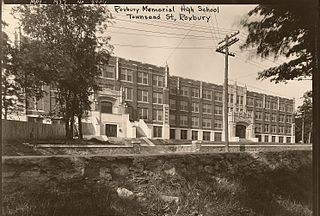
Roxbury Memorial High School is a defunct four-year public high school serving students in ninth through twelfth grades. Originally founded as Roxbury High School, the school was situated at 26 Townsend Street, in the Roxbury neighborhood of Boston, Massachusetts, United States from 1926 until its closure in 1960.
South Boston High School was a public high school located in South Boston, Massachusetts, United States. It was part of Boston Public Schools. The school closed in 2003, and its former facility is currently occupied by Excel High School.
From 1974 to 1976, the court-ordered busing of students to achieve school desegregation led to sporadic outbreaks of violence in Boston's schools and in the city's largely segregated neighborhoods. Although Boston was by no means the only American city to undertake a plan of school desegregation, the forced busing of students from some of the city's most impoverished and racially segregated neighborhoods led to an unprecedented level of violence and turmoil in the city's streets and classrooms and made national headlines.
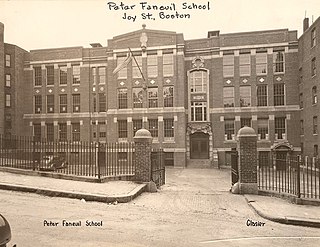
Another Course to College (ACC) is a Public Pilot School located in Hyde Park, Boston, Massachusetts, United States.

Dorchester High School for Girls is a defunct four-year public high school that served students in ninth through twelfth grades, that was located in the Dorchester neighborhood of Boston, Massachusetts, United States from 1925 to 1953.

Darryl K. Williams of Roxbury, Boston, Massachusetts and Milton, Massachusetts was an advocate for social justice, compassion and forgiveness as well as a local advocate for accessibility for persons with disabilities. As a 15-year-old African-American living in Roxbury, Boston, Massachusetts, Williams became the victim of a school shooting on September 28, 1979, in Charlestown, Boston, Massachusetts while playing at a high school football game. Williams survived the shooting but was paralyzed from the neck down for the rest of his life. Protests, rallies and school walkouts ensued in response, and racial tensions in the city of Boston escalated in the aftermath.


















